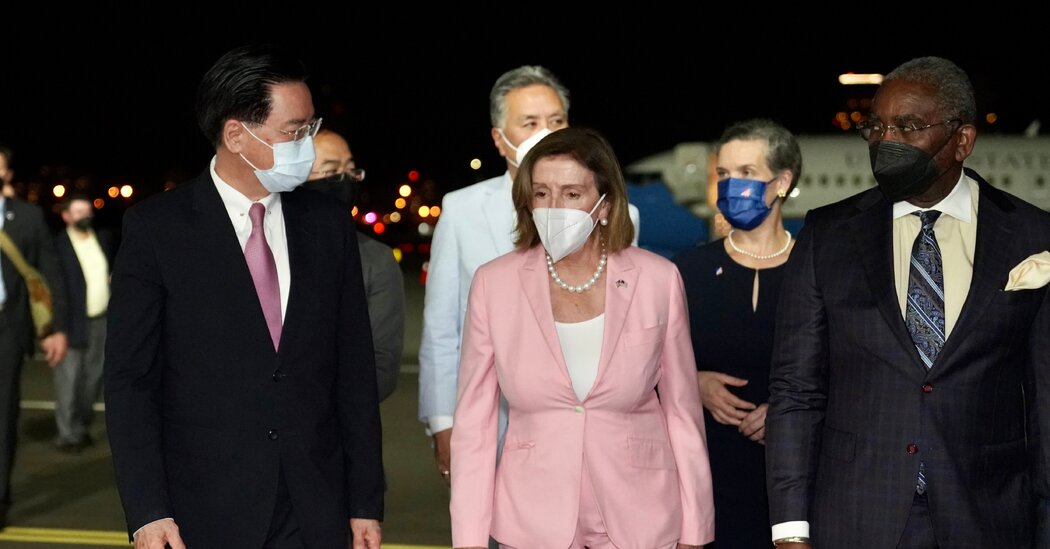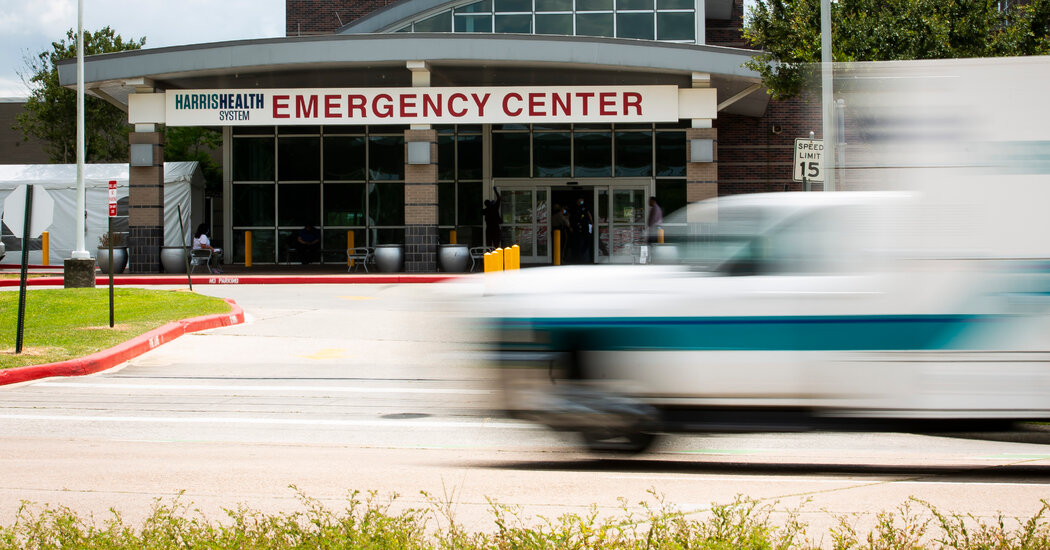
Follow our live coverage of Nancy Pelosi’s Taiwan visit.
Taiwan, an island of 23 million people 80 miles off the coast of China, has long been a point of tension between Washington and Beijing. Now those tensions are at a new high, with Speaker Nancy Pelosi having held a series of high-profile meetings there on Wednesday. Ms. Pelosi is the most prominent American official to visit the island since 1997, when her predecessor Newt Gingrich went there.
China claims Taiwan, a self-governing island democracy, as its territory, and has vowed to take it back, by force if necessary. In a call with President Biden on Thursday, China’s leader, Xi Jinping, sharply warned the United States against intervening in the dispute. Beijing has vigorously protested Ms. Pelosi’s trip, warning of unspecified consequences for the United States.
Its warnings have reverberated through the Pentagon and the Indo-Pacific Command in Hawaii, where American military officials have been tasked with protecting Ms. Pelosi, as well as assessing what China could do militarily in response to her trip. Taiwan, the world’s leading producer of semiconductors, is also vulnerable to stepped-up economic pressure from Beijing.
Here is a look at the issues around Ms. Pelosi’s visit.
China’s leader has long set his sights on Taiwan.
Mr. Xi, China’s authoritarian leader, has made it clearer than any of his predecessors that he sees unifying Taiwan with China as a primary goal of his rule.
He is expected to be confirmed to an unprecedented third term as leader at a Communist Party congress in the fall. Ahead of that all-important political meeting, Mr. Xi will be keen to project an image of strength at home and abroad, particularly on the question of Taiwan.
In June, Mr. Xi dispatched his defense minister, Gen. Wei Fenghe, to an international conference in Singapore, where Mr. Wei warned that China would not hesitate to fight for Taiwan.
“If anyone dares to split off Taiwan, we will not hesitate to fight, will not flinch from the cost and will fight to the very end,” General Wei told his audience.
The question of when Mr. Xi might try to absorb Taiwan is extensively debated among military and civilian experts on China, but it is not expected to be imminent.
“China does want Taiwan ‘back’ badly, but that does not mean it wants an early bloody war that would destroy China’s economic miracle,” William H. Overholt, a senior research fellow at Harvard’s Kennedy School, wrote in the current issue of Global Asia.
In a fiery speech marking the 100th anniversary of the founding of the Chinese Communist Party last year, Mr. Xi stressed the need for the mainland’s unification with Taiwan, which he called “a historic mission and an unshakable commitment of the Communist Party of China.”
Any country that dared to stand in the way would face a “great wall of steel” forged by China’s 1.4 billion people, he said.
Taiwan is the single biggest flash point in U.S.-China relations.
China’s incursions into airspace and waters near Taiwan have become more aggressive in the past several years, heightening the risk of conflict.
In June, Beijing upped the stakes when the foreign ministry declared that China had jurisdiction over the Taiwan Strait and that it could not be considered an international waterway.
And in the past year, Chinese military planes have increasingly probed the airspace near Taiwan, prompting Taiwan to scramble fighter jets.
Some American analysts have made it clear that China’s military capabilities have grown to the point that an American victory in defense of Taiwan is no longer guaranteed.
Oriana Skylar Mastro, a fellow at Stanford University’s Freeman Spogli Institute for International Studies, recently outlined the array of weaponry China has amassed for a fight over Taiwan in a commentary published in The New York Times.
China now has the world’s largest navy, and the United States could throw far fewer ships into a Taiwan conflict, she said. “China’s missile force is also thought to be capable of targeting ships at sea to neutralize the main U.S. tool of power projection, aircraft carriers,” she said.
Earlier this week, the Seventh Fleet ordered the aircraft carrier Ronald Reagan and its strike group to sail from Singapore north toward the South China Sea, and in the direction of Taiwan. A Navy spokesperson declined to say whether the carrier would be sailing in the vicinity of Taiwan or sailing through the Taiwan Strait.
Taiwan is a political minefield for Washington.
Ms. Pelosi’s trip put President Biden in an awkward position. She and her staff insisted that the speaker, as the leader of a separate but coequal branch of American government, had the right to go anywhere she desired.
For his part, Mr. Biden did not want to be seen as dictating where the speaker could travel. Before her departure, he signaled that he questioned the wisdom of the trip.
“I think that the military thinks it’s not a good idea right now,” Mr. Biden said.
In an intentionally ambiguous diplomatic arrangement adopted when Washington recognized Communist-ruled China in 1979, the United States maintains a “one China” policy that acknowledges, but does not endorse, the Chinese position that Taiwan is part of China.
Mr. Biden has said three times, most recently in May, that the United States would deploy force to help Taiwan against a Chinese invasion. On each occasion, the White House walked back his statements, saying that the policy of “strategic ambiguity” remained, under which Washington remains vague about how forcefully the United States would come to Taiwan’s aid.
The United States maintains robust diplomatic relations with China, with a big embassy in Beijing and four consulates around the country. But relations are at a low over military, economic and ideological competition between the two countries.
The current ambassador to Beijing, R. Nicholas Burns, is one of America’s most experienced diplomats. In Taiwan, the United States keeps a representative office, the American Institute in Taiwan, headed by a low-profile official from the State Department. At the same time, Washington supplies Taiwan with billions of dollars in military aid and weapons.
Ms. Pelosi has a history of poking China in the eye.
The speaker is a longstanding critic of China. In Beijing, she is viewed as hostile.
As a two-term congresswoman from California, Ms. Pelosi visited Beijing in 1991, two years after Chinese troops opened fire on student protesters around Tiananmen Square, killing hundreds if not thousands.
Mike Chinoy, then a correspondent for CNN, recalled in an article this week how Ms. Pelosi then left the square in a taxi. Police arrested the reporters, detaining them for a couple of hours, he wrote.
Ms. Pelosi is a strong supporter of the Dalai Lama and the rights of Tibetans. In 2015, with official permission from the Chinese government, Ms. Pelosi visited Lhasa, the capital of Tibet, on a tightly controlled trip that is usually off limits to foreign officials and journalists.
The speaker’s plans for a Taiwan trip attracted some unlikely backers. Senior officials in the Trump administration, including the former secretary of state, Mike Pompeo, and the former secretary of defense, Mark Esper, said they would like to join her. Mr. Pompeo tweeted that he was banned in China, but would be happy to accompany Ms. Pelosi to Taiwan.




